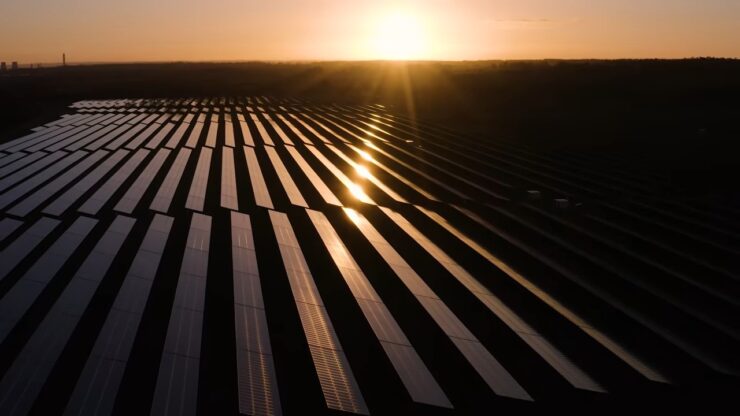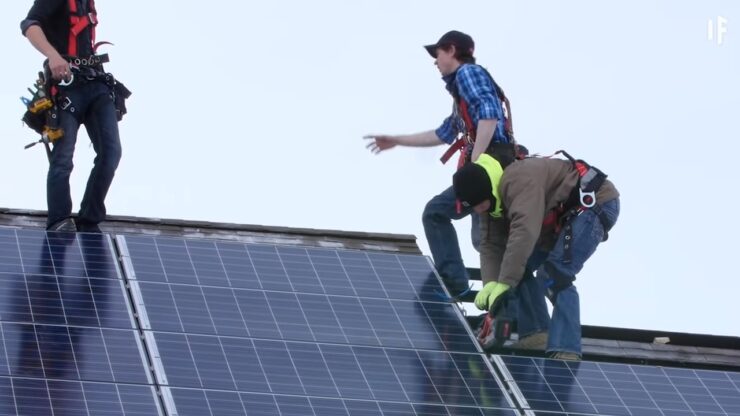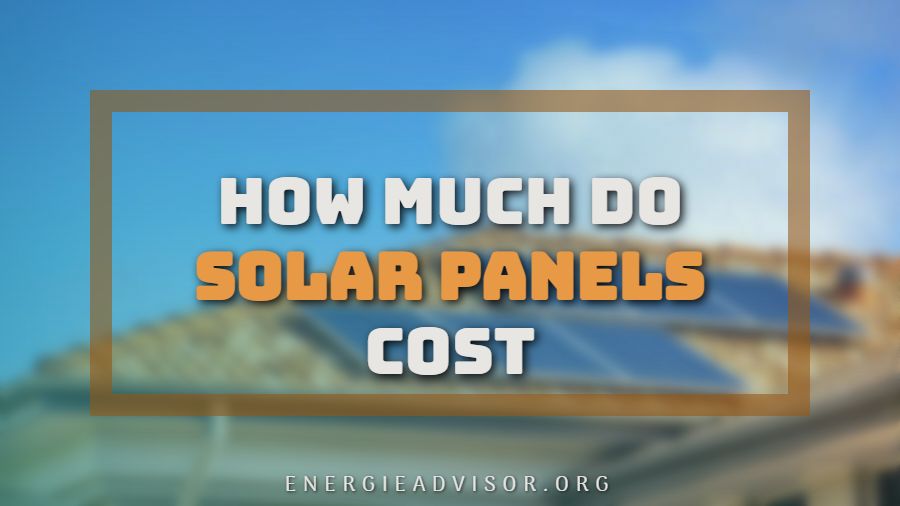The main reason you decided to welcome the solar panel system at your home is probably the desire to reduce the cost of your electricity bills, and use the power source nature gave us for free. There is also the matter of the need to be more responsible towards the environment and our planet, but that is the subject of another discussion.
If you have made up your mind and you are ready to do this, to start a transition to solar power, you must be wondering how much will the whole thing cost, precisely. We are talking about the price of each panel, the cost of installation, mounting, maintaining, reparation, etc.
For starters, the most common way of doing this math is by looking at the price of a panel in dollars per watt. This year, the average national cost of a solar panel was $2.99/watt. After receiving this information, you should know that the average size of the solar panel system in the U.S is approximately six kilowatts. That means that the price of most standard solar composition would be $12,558 after tax credits. And the best part is that in 2020 the price will be even lower, as predicted.
Relation Between Solar Panel Price and Size
How much money you will have to get out of your pocket or bank account depends on a couple of things, but mostly on the size of the system. The question is – how much electricity you want to generate this way. The bigger system asks for more panels, more equipment, and, therefore, more money.
After you do the calculations and determine what is the thing you need and want, you should talk to your neighbors, especially those who already have the solar system installed, to see what they say. One thing is talking about this, analyzing the statistics taken from the internet, and completely different having an insight into the real situation on the ground. Because the thing is, the total cost of going solar depends on the state you live in.
What you should also know is that bigger solar systems will cost more initially, but they will also result in more savings in the months and years to come. The huge installations, which can generate enough energy to cover all your needs regarding electricity, and make sure you can easily go off the grid, will pay off for sure looking long term since you won’t have to pay electricity bill anymore.
Average Cost by States
It could be very tricky if you created your budget list based on someone else’s experience, especially if that person lives in a different state than you. There can be considerable differences in that matter, from getting all necessary licenses to the cost of purchasing and installing a system like this one. A couple of factors are influencing the cost settings, but the price of electricity is number one without a doubt.
According to the EnergySage Solar Marketplace, the average price of the solar system (for 6 kW household) in Florida, for example, is going from $9,240 to $12,852, while in Iowa, the price range is $13,440 – $14,448. And these are the total prices we get after subtracting standard 30 percent federal tax credit for solar.
An interesting fact is that the top 10 states if we are looking installed solar capacities, are even going higher than the national average panel cost per watt. That proves that solar culture is not only blossoming in those regions of the United States, where the solar panel price is extremely low. It’s growing all across the country, no matter if the direct correlation of cost per watt isn’t the most favorable one.
Price Determined by Manufacturer
Different solar panel brands have their own calculations and philosophy regarding pricing. All you should care about is to get accurate and current information about this particular angle and compare products of one manufacturer, with the same ones from another. Analyze what they are offering, the quality of panels, their design, potential flaws, as well as the price they are asking for.
EnergySage Solar Marketplace is showing us that there aren’t many brands on the U.S soil willing to exceed the average price too much. Most of the manufacturers are asking from $14.000 to $20.000 to set up an average 6kW solar panel system at your household. But you should have in mind that there are many factors which can impact the final system price – the location of a household, inverter brand, racking equipment, etc.
The Cost of Installation
It’s more often than you think that people count in only the cost of solar panels when thinking about the final amount of money they will have to pay. But there is also the expense for installation many tend to forget. And not just that, people assume that this particular agenda is always the same. But it’s not, it depends on many things, such as equipment, home characteristics, permits, and labor.
In most states, you will have to pay the fee in order to connect your solar energy system to the grid. You cannot avoid that part, so you should be prepared and ask around how much does that cost. Then, you will need to hire the professional crew who will design, assemble, and install solar panels at your roof. That will be an extra expense too.
When it comes to equipment, you need to know that not every solar panel comes with all necessary parts to put the whole system together. On some occasions, you will be forced to buy cables, connectors, or inverter separately. So the price range, when you look at the solar panel selection, can be quite significant. Also, you should know this as well – the more efficient equipment is, the price tag will be higher.
Now, this next aspect is the one nobody is thinking about, but it’s the one that has a great impact on the total installation cost. We are talking about the position of your house, but also about the construction of your roof. If your home, for example, is facing south, your roof specifically, and it’s positioned at a 30 degree angle, you won’t have any problem with setting everything up. But, if you have skylights, multiple level roof or your house is positioned otherwise, the process of installing the solar system will be a bit harder, and therefore, more expensive.
How Much Can You Save?

The solar machinery is on your roof now, and it’s working smoothly. So, at this point, you are probably thinking about how much money are you going to save after, let’s say 20 years of using solar power as the primary source of electricity at your home. We have to admit that the precise amount depends, as usual, on a couple of things.
The first question is, where do you live? Different cities and states have different electricity costs since they are charged by the local utility company, as well as different rebates and incentives for going solar. And on top of that, the amount of sunshine is not the same at each location.
For example, homeowners in Boston who decided to install solar systems can hope to save around $44.000 on electricity bills only, while the family in Seattle cannot hope to put by more than $12.000 considering all the factors listed above.
Besides that, the payback period will be different for people living in different places. The average household in the U.S will be able to repay everything invested in seven years, which really is not too bad, but that number can be even lower if you live in Boston, for example. The predicted period for breaking even over there is five years. Those who live in Charlotte, however, won’t be that lucky, given the predictions say the number for them to pay back the invested 11 years.
Tips and Tricks

1. Start Networking
Before you click “Buy this”, you should think about a couple of things some more. It’s necessary to research this solar topic through and through. That’s something even the U.S. Department of Energy’s National Renewable Energy Laboratory recommends, so you don’t get caught up with some overpricing, but average local solar panel company. Compare all the offers and options, and learn about all the details you can so you don’t get fooled.
In order to avoid large installers and find some smaller enterprises that usually tend to give more acceptable offers, you should use the installer network, which may bring you many benefits. There are some excellent services they can provide, such as getting a bid from a couple of local installers after you register the location of your property. That way, although it sounds crazy, you can save from $5.000 to $10.000 smoothly.
2. Trust Smaller Companies
Please be aware that shouted names and famous brands are not always the best choice. Don’t be naive and the victim of marketing tactics. We encourage you to consider hiring some small, relatively unknown company if you believe they can provide what you need. They don’t have enough money to pay for advertising, but that doesn’t mean they won’t do the job well.
Research conducted by the U.S. government showed that big solar installers are up to five thousand dollars more expensive than the smaller capacity companies. Having that in mind, you should definitely take some time to compare all offers you get, collect some information about each company you’re thinking about as possible match, and make sure you don’t overpay for solar.
3. Don’t Forget About Equipment
We talked about the necessity of research and comparing the offers before choosing one when it comes to purchasing solar panels, as well as installer company employment. But you shouldn’t forget about the equipment too.
The truth is that this huge, national-scale installing firms are doing the unthinkable – they are offering higher prices, but they tend to have fewer solar equipment options. So, when studying which solar package to buy, you need to take a good look at supporting equipment as well and check if everything you need is there. You will save some money that way for sure since you won’t be in a position to buy parts separately.
Incentives
There are so many financial incentives that can make the solar market very alluring and welcome, even in the states and cities that cannot brag about the great amount of sunlight. There is no doubt that the final cost of a solar system depends on where you live, and what tax credits, local incentives, rebates, and grants you can get.
The experience of those who went through the process of purchasing and installing the solar construction showed us that expenses could be cut off by 50 percent and more if the homeowners know what door they should knock-on, on and what rights they have in this matter. Some of them get the solar system for just a couple of thousand dollars total. Impressive, isn’t it?
Conclusion
In the end, there are two most important things you should remember. First, solar panels themselves are usually just one-third of the total cost when talking about installing the solar system at your household, and second, the best solar panels are not necessarily the most expensive ones. The same applies to the matter of equipment and installation company.
This is the time you should be smart and calculate your options and costs in the best possible way. There are definitely things you can do to save some money in a process, but to make it even possible and tangible, you have to be involved and interested to understand how the solar world breathes and lives. It’s quite a challenge, we know, but it will pay off, which is the most important thing, and it will make you feel great satisfaction after all.

